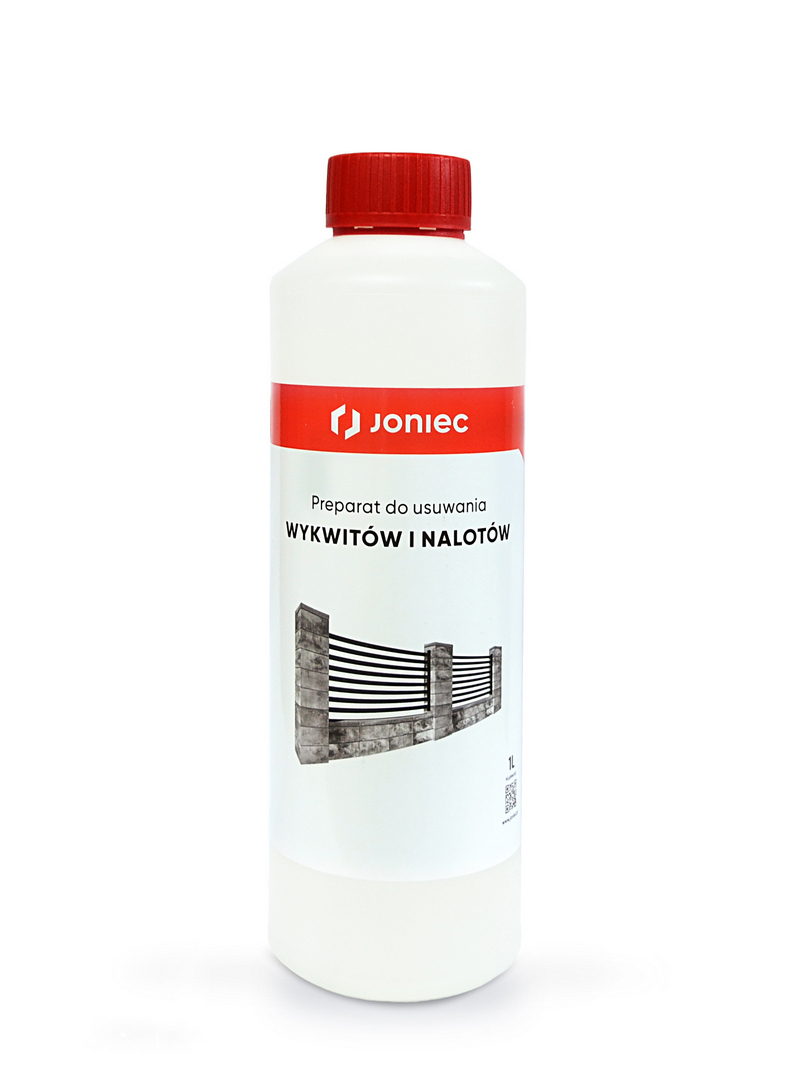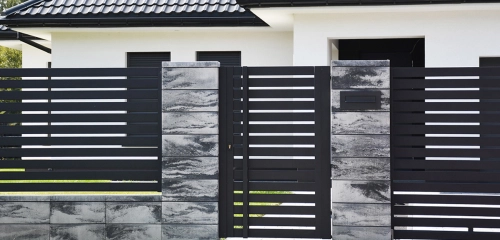Lime efflorescence on fencing and paving is a frustrating problem for many garden and property owners. Their presence can dramatically alter the aesthetic appearance of even the most carefully designed spaces. Efflorescence on concrete can occur especially where it is exposed to moisture, rain and changing weather conditions. Why do these efflorescences appear and how can we combat them?
Sources of the problem: mechanism of lime efflorescence on fences and paving stones
Lime (carbonate) efflorescence is a natural phenomenon. They are caused by the reaction of calcium hydroxide, which is one of the hydration (setting) products of the cement used to make fence blocks and paving stones, with carbon dioxide from the atmosphere. While the mixture is setting, some of the calcium hydroxide remains unbound. Water (rain and dew) penetrating into the blocks dissolves the calcium hydroxide in small amounts. The resulting solution migrates through the capillary pore system to the surface of the concrete element, where it becomes carbonated, i.e. reacts with carbon dioxide from the atmosphere. As a result, it forms calcium carbonate, which is difficult to dissolve and is deposited on the surface of the blocks in the form of white deposits. Lime efflorescence is a temporary phenomenon and, depending on its intensity, gradually disappears.
Methods for removing efflorescence from concrete elements of the fence surface
There are several effective methods for removing lime efflorescence from concrete surfaces.
The process of removing lime efflorescence, for example, can be carried out by mechanical cleaning. This includes the use of a stiff bristle brush or scrubber to help remove the outer layer of efflorescence. This method is particularly recommended if the lime efflorescence is not too deep and has not yet had time to penetrate deeply into the masonry surface.
An alternative to mechanical cleaning is to use a special product for efflorescence and tarnish removal. With this type of product, efflorescence removal is based on the fact that the calcium carbonate is dissolved. If used, the cleaning preparation should be spread on the concrete elements according to simple handling instructions:
- flush the fence with water under pressure,
- use a product to remove efflorescence and tarnish.

One method is correct construction. What to keep in mind to protect the surface of the fence from the construction stage:
- It is advisable to extend the footing at least 5 cm above ground level,
- care should be taken to cover the foundation with the horizontal insulation recommended by the manufacturer of the fence concrete blocks,
- after construction, seal any gap through which water can penetrate into the fence on concrete blocks.
In order to prevent the recurrence of lime efflorescence, it is important to regularly maintain concrete surfaces, including fences and paving stones. We must not neglect the cleaning of concrete surfaces, their maintenance and the use of suitable impregnations to provide a protective layer. These can reduce the absorbability of concrete elements and protect them from the negative effects of the weather.
Read expert tips: Jak czyścić i impregnować ogrodzenie betonowe? (joniec.eu)
Summary
In this article we discuss the important aspects of lime efflorescence on a fence:
- We explain where the white tarnish from lime efflorescence comes from, understanding which is key to effectively preventing its reappearance.
- We present practical methods for removing efflorescence from the surface of a fence that can be applied to existing deposits and explain how a product that removes efflorescence works.
- We talk about the importance of regular fence maintenance to avoid lime efflorescence; regular cleaning and maintenance are key to maintaining the aesthetics and longevity of the fence and explain how to do it.

Always fashionable fences for homes - timeless designs, colours and systems, the most popular choice of JONIEC® brand customers
Choosing the right fence is not only a question of aesthetics, but also functionality and durability. A modern fence is the showpiece of any home, which should harmonise with its surroundings while providing security and privacy. JONIEC®, a leader in the concrete fencing industry, offers solutions that combine modern technology with timeless design. With a wide range of designs, colours and systems, JONIEC® fences are products that will meet the expectations of even the most demanding customers. Read the whole





 PL
PL DE
DE SK
SK RU
RU ES
ES